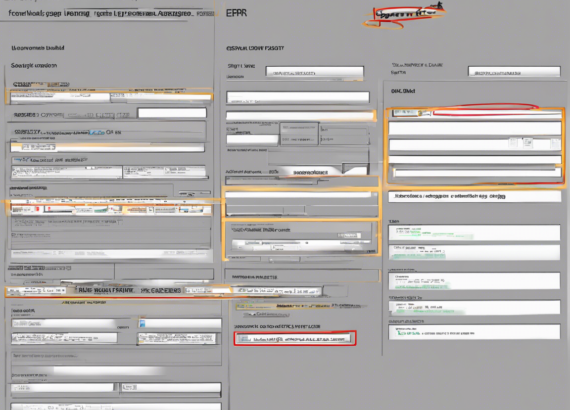Data Analysis with dbt: A Comprehensive Guide
In the realm of data analytics, dbt stands for Data Build Tool. It is an open-source command-line tool that enables data teams to define data transformation operations in SQL and then run those operations in the data warehouse. dbt plays a crucial role in the modern data stack by providing a consistent and structured environment for data transformation, making it an indispensable tool for data analysts and data engineers alike.
What is dbt and How does it Work?
dbt Overview
dbt is a tool that allows data analysts and engineers to transform data in the data warehouse using SQL queries. It is designed to help data teams write modular, testable, and maintainable SQL code for data transformation. With dbt, users can define data models that encapsulate specific business logic and dependencies, making it easier to manage and maintain the data transformation process.
How dbt Works
dbt works by allowing users to define data models using SQL in a models directory within the project structure. These models can reference each other, allowing for the creation of a data transformation pipeline. Once the data models are defined, users can run the “dbt run” command to execute the SQL queries and generate the transformed data in the data warehouse. Additionally, dbt provides functionalities like testing, documentation, and deployment to streamline the data transformation process.
Importance of dbt in Data Analysis
Streamlined Data Transformation
dbt simplifies the data transformation process by providing a structured framework for defining, running, and managing data models. This streamlines the workflow for data analysts and engineers, allowing them to focus on writing SQL queries and analyzing data rather than managing complex ETL processes.
Data Consistency and Reusability
By defining data models in dbt, data teams can ensure consistency in data transformation operations across the organization. Data models can be reused in different analyses, making it easier to maintain and update data transformation logic as the business requirements evolve.
Easy Testing and Documentation
dbt comes with built-in functionalities for testing data models and documenting the transformation logic. This allows data teams to ensure the accuracy and reliability of the data transformation process and provides transparency into the business logic behind the data models.
Version Control and Collaboration
With dbt, data teams can leverage version control systems like Git to manage changes to data models and collaborate on data transformation projects. This promotes collaboration among team members and ensures that changes to data models are tracked and documented effectively.
dbt Best Practices
Modularize Data Transformation Logic
Break down complex data transformation logic into modular data models in dbt to improve maintainability and reusability. This approach makes it easier to manage data transformation pipelines and update specific parts of the transformation process without impacting other data models.
Document Data Models
Documenting data models in dbt with descriptions and metadata provides valuable insights into the purpose and business logic behind each model. This documentation helps new team members understand the data transformation process and facilitates knowledge sharing among the team.
Implement Testing Frameworks
Leverage dbt’s testing functionalities to validate the accuracy and consistency of data models. Writing tests for data models ensures that the transformation logic produces the expected results and helps identify any discrepancies or errors in the data.
Monitor Performance
Monitor the performance of data transformation operations in dbt to identify bottlenecks and optimize query performance. By analyzing query execution times and resource utilization, data teams can fine-tune data transformation processes for efficiency and scalability.
Frequently Asked Questions (FAQs)
Q1: What databases does dbt support?
A1: dbt supports popular data warehouses like Snowflake, BigQuery, Redshift, and more. It can connect to any database that supports SQL queries.
Q2: Can dbt be used for real-time data processing?
A2: dbt is primarily designed for batch data processing and is not suitable for real-time data transformation. However, it can be integrated with streaming platforms for near-real-time analytics.
Q3: How does dbt handle incremental data loads?
A3: dbt provides functionalities for managing incremental data loads by using timestamps or unique identifiers to identify new data. Users can write SQL queries to handle incremental data updates in the data warehouse.
Q4: Is dbt suitable for small-scale data projects?
A4: While dbt is commonly used in enterprise-level data projects, it can also be beneficial for small-scale data teams. The modularity and scalability of dbt make it a versatile tool for data transformation tasks of any size.
Q5: Can dbt be integrated with business intelligence tools?
A5: Yes, dbt can be integrated with BI tools like Looker, Tableau, and Mode for visualizing and analyzing transformed data. This integration allows data teams to create end-to-end analytics solutions using dbt and BI tools.
In conclusion, dbt is a powerful tool for data transformation that enhances the efficiency, consistency, and maintainability of data analytics projects. By leveraging dbt’s capabilities for defining data models, testing, documentation, and collaboration, data teams can streamline their data transformation processes and focus on deriving valuable insights from data. Embracing dbt as part of the modern data stack empowers organizations to build robust data pipelines and drive data-driven decision-making across the board.







